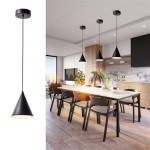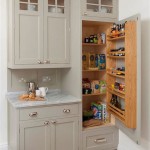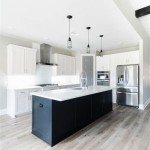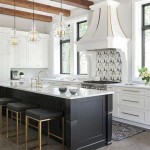Metal Kitchen Island With Seating: A Functional and Stylish Addition
The kitchen island has become a central element in modern kitchen design, offering both functionality and aesthetic appeal. Among the various material options available, metal kitchen islands with seating stand out due to their durability, contemporary style, and versatility. This article explores the key features, benefits, design considerations, and practical aspects of incorporating a metal kitchen island with seating into a kitchen space.
Durability and Material Properties of Metal
Metal, as a primary construction material for kitchen islands, offers exceptional durability and longevity. Unlike wood or laminate, metal is resistant to moisture, heat, and impact, making it ideal for the demanding environment of a kitchen. Stainless steel is a popular choice due to its resistance to corrosion, staining, and bacterial growth. It is also relatively easy to clean and maintain, requiring only regular wiping to keep its surface looking pristine.
Other metals, such as wrought iron or powder-coated steel, can also be utilized, each offering unique aesthetic qualities. Wrought iron provides a more traditional or rustic look, while powder-coated steel allows for a wide range of color options and finishes. The choice of metal will significantly impact the overall style of the kitchen island and its integration with the existing kitchen décor.
The structural integrity of a metal kitchen island is also a significant advantage. Metal can withstand heavy loads without warping or cracking, making it suitable for supporting countertops made of granite, marble, or other dense materials. The inherent strength of metal also allows for the creation of open designs with minimal supports, contributing to a more spacious and airy feel in the kitchen.
The long-term cost-effectiveness of a metal kitchen island should be considered. While the initial investment may be higher compared to some other materials, the durability and resistance to damage can translate into significant savings over the lifespan of the island. Metal islands are less likely to require repairs or replacements, making them a worthwhile investment for homeowners seeking a long-lasting and reliable kitchen fixture.
Functionality and Design Considerations for Seating
Incorporating seating into a metal kitchen island elevates its functionality beyond just a preparation or storage space. The seating area transforms the island into a versatile hub for dining, socializing, or even working. Careful consideration must be given to the design and placement of the seating to ensure comfort and usability.
The height of the island countertop is a critical factor in determining the appropriate seating height. Standard kitchen countertops are typically 36 inches high, requiring counter-height stools or chairs. Taller islands that are designed as breakfast bars may require bar-height stools. Adequate legroom should be provided beneath the countertop, typically around 10-12 inches, to ensure comfortable seating.
The number of seats is another important consideration, depending on the available space and the intended use of the island. A small island may only accommodate two seats, while a larger island could comfortably seat four or more people. The spacing between seats should also be considered, allowing enough room for each person to move freely.
The style and material of the seating should complement the metal island and the overall kitchen design. Options include metal stools with or without backrests, upholstered chairs with metal frames, or even wooden stools for a contrasting element. Comfort features, such as padded seats or footrests, can enhance the seating experience.
Beyond the seating itself, the surrounding area should be designed to accommodate the seating arrangement. This may involve ensuring adequate clearance for walkways or incorporating storage solutions near the seating area for convenient access to utensils or other kitchen essentials.
Storage Solutions and Customization Options
Metal kitchen islands with seating can be highly customized to meet specific storage and design needs. Integrating storage solutions into the island maximizes its functionality and helps to keep the kitchen organized. Customization options allow homeowners to create a unique and personalized kitchen space.
Drawers and cabinets are common storage features in kitchen islands. Drawers can be used for storing utensils, cookware, or linens, while cabinets are suitable for larger items such as pots, pans, or small appliances. The size and configuration of the drawers and cabinets can be tailored to accommodate specific storage requirements.
Open shelves provide another storage option, allowing for the display of decorative items or frequently used kitchen tools. Open shelves can also contribute to a more airy and open feel in the kitchen. The placement of open shelves should be carefully considered to avoid obstructing walkways or interfering with the seating area.
Specialized storage solutions, such as wine racks, spice racks, or knife blocks, can further enhance the functionality of the island. These specialized features help to keep specific items organized and easily accessible.
Beyond storage, other customization options include the addition of features such as built-in sinks, cooktops, or even small refrigerators. These features can transform the island into a fully functional workstation, ideal for preparing meals or entertaining guests. The integration of these features requires careful planning and may involve modifications to the island's structure and electrical or plumbing connections.
The finish of the metal can also be customized to match the existing kitchen décor. Powder coating allows for a wide range of color options and finishes, while brushed or polished metal provides a more industrial look. The choice of finish should complement the other materials and colors in the kitchen to create a cohesive and visually appealing design.
Lighting and Electrical Considerations
Proper lighting is essential for both the functionality and aesthetics of a metal kitchen island with seating. Adequate lighting ensures safe food preparation and creates a welcoming atmosphere for dining or socializing. Electrical considerations are also important for powering appliances or accessories that may be integrated into the island.
Pendant lights are a popular choice for illuminating kitchen islands. Pendant lights can be hung directly above the island, providing focused light for tasks such as chopping vegetables or reading recipes. The style and number of pendant lights should be chosen to complement the island's design and the overall kitchen décor.
Recessed lighting can also be used to provide general illumination for the kitchen, including the area around the island. Recessed lights are discreet and can be positioned to highlight specific areas of the island, such as the seating area or a decorative display.
Under-cabinet lighting can be installed beneath the countertop to provide additional task lighting. This type of lighting is particularly useful for illuminating the work surface during food preparation.
Electrical outlets should be strategically placed on the island to provide power for appliances such as blenders, food processors, or laptops. The number and location of outlets should be carefully planned to meet the specific needs of the homeowner.
If the island includes a built-in sink or cooktop, proper electrical and plumbing connections must be installed. This typically requires the services of a qualified electrician and plumber. The wiring and plumbing should be concealed within the island's structure to maintain a clean and uncluttered appearance.
Maintenance and Cleaning of Metal Surfaces
Maintaining the appearance and cleanliness of a metal kitchen island with seating is relatively straightforward. Regular cleaning can prevent the buildup of dirt, grease, and stains, ensuring that the island remains in good condition for years to come.
Stainless steel surfaces can be cleaned with a mild detergent and warm water. A soft cloth or sponge should be used to avoid scratching the surface. For stubborn stains, a stainless steel cleaner can be used to remove residue and restore the shine.
Wrought iron surfaces can be cleaned with a damp cloth and mild soap. Avoid using abrasive cleaners or scouring pads, as these can damage the finish. Regular waxing can help to protect the wrought iron from rust and corrosion.
Powder-coated surfaces can be cleaned with a damp cloth and mild detergent. Avoid using harsh chemicals or solvents, as these can damage the powder coating. Scratches or chips in the powder coating can be repaired with touch-up paint.
Pay attention to the seating area of the island. Upholstered chairs or stools may require regular vacuuming or spot cleaning to remove dirt and stains. Metal stools can be wiped down with a damp cloth.
Regular maintenance, such as tightening screws or hinges, can help to prevent problems and extend the lifespan of the island. Inspect the island periodically for signs of wear or damage, and make any necessary repairs promptly.
Integration with Overall Kitchen Design
A metal kitchen island with seating should be seamlessly integrated into the overall kitchen design. The island's style, materials, and finishes should complement the existing cabinetry, countertops, and appliances. Careful planning is essential to ensure that the island enhances the functionality and aesthetics of the kitchen.
Consider the style of the kitchen when selecting a metal island. A sleek, stainless steel island may be well-suited for a modern or contemporary kitchen, while a wrought iron island may be more appropriate for a traditional or rustic kitchen. The island's design should reflect the overall style of the kitchen.
The color of the island should complement the other colors in the kitchen. A neutral color, such as white, gray, or black, is a safe choice that will work well with a variety of color schemes. A bolder color can be used to create a focal point in the kitchen.
The size and shape of the island should be appropriate for the size and layout of the kitchen. A large island may overwhelm a small kitchen, while a small island may get lost in a large kitchen. The shape of the island should also be considered. A rectangular island is a common choice, but other shapes, such as square, round, or L-shaped, may be more suitable for certain kitchen layouts.
The placement of the island is also important. The island should be positioned to allow for easy access to other areas of the kitchen, such as the sink, stove, and refrigerator. Adequate space should be left around the island for walkways and for opening drawers and cabinets.
By carefully considering these factors, homeowners can create a metal kitchen island with seating that is both functional and aesthetically pleasing, enhancing the overall design of their kitchen.

Kitchen Islands With Seating Pictures Ideas From Hgtv

Furniture Of America Ursa Medium Oak 48 Inch Wide Metal Kitchen Island With Caster Wheels By

Kitchen Islands Bay Area Props

Julia Stainless Steel Top Kitchen Island Crosley Furniture

Kitchen Island With 5 Shelves Dining Table Large Worktop Ebay

How To Design Large Kitchen Islands With Seating

1000 Ideas About Stainless Steel Island On Pinterest Range

Kitchen Island In Natural Finish Variety Of Sizes Counter Height 36 Or Bar 42 Reclaimed Wood Option To Add Caster Wheels Etsy

Kitchen Island Designs With Stainless Steel Countertop

Westsky 64 In Wide Style Storable Macaria Kitchen Island Cart Black Finish Rustic Oak Wood Top With Metal Frame Ac00402 Bk The Home
See Also








